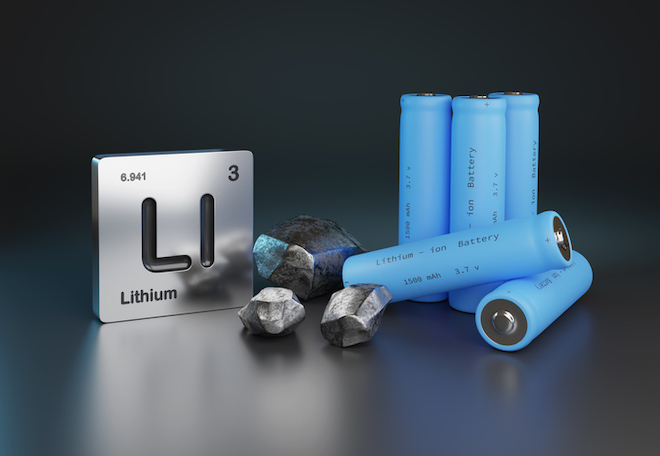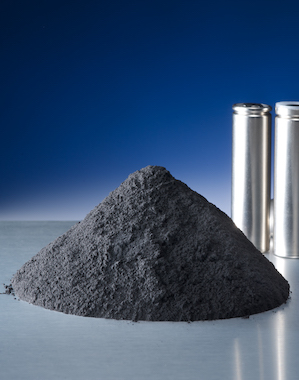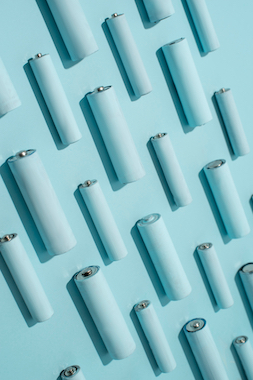New Energy Materials


IIndia's push for a green economy is driving significant growth in the electric vehicle (EV) Industry and Energy storage systems (ESS) industry. The country has set an enhanced target at COP26 of usage of 500 GW of non-fossil fuel-based energy by 2030 and being Carbon Neutral by 2070. In this regard, India stands committed to reduce Emissions Intensity per GDP by 45 percent by 2030, from 2005 level.
One of the key components of EV & ESS is Lithium-ion Cell & Battery (LiB). Currently most of the LiB is imported in India for usage in the EV & ESS industry. To reduce dependence on imports, the government is emphasizing the need for localized LiB production through its various Production Linked Incentive (PLI) and Faster Adoption and Manufacturing of (Hybrid &) Electric Vehicles (FAME) schemes.
The Concept of Lithium-Ion Batteries 
Lithium-ion batteries (LiBs) have become the powerhouse behind EVs, ESS and modern portable electronics. Cells consist of largely four main components: cathode, anode, electrolyte, and separator. A lithium-ion battery, as the name implies, is a type of rechargeable battery that stores and delivers energy by the motion or movement of lithium ions between anodes and cathodes through an electrolyte. This movement of lithium ions from the anode to the cathode and vice versa is critical to the functioning of a lithium-ion battery.
During the charging process, there is a progressive migration of lithium ions from the cathode to the anode via the electrolyte. In other words, the charging procedure is simply the exact opposite of the discharge process.
During discharging, anode discharges lithium ions into the electrolyte. The discharged ions are subsequently conveyed to the cathode, which is also referred to as the positively charged electrode, where they are absorbed.
At Himadri, we are determined to remain at the forefront of this massive transition towards a green economy, aligned with India’s vision of becoming a self-reliant nation (Atmanirbhar Bharat in Hindi) and reducing carbon emission. We, ourselves, have set a target of becoming Carbon Neutral by 2050 to align our vision with India’s and global carbon neutral target.
We recognize the pivotal role of LiB in driving sustainable growth in the foreseeable future in India and globally. Through our various offerings from our New Energy Materials vertical, we aim to cater to the major LiB components - Anode Materials and Cathode Materials - which constitute approx. 55-65% of the cost of a LiB. We also aim to contribute to our Carbon Neutral Target by Recycling of used LiBs.
We are Pioneer in India of :-
1. Precursor Coke for Synthetic Anode Graphite
2. Synthetic Anode Graphite
With our continued investment in research and development & Innovations, we aim to enhance LiB performance, safety, and cycle life, ensuring that those play a critical role in shaping a sustainable world
The New Energy Materials Division would function under the umbrella of Himadri Clean Energy Limited, a Wholly Owned Subsidiary of Himadri Speciality Chemical Ltd. The whole operations of Himadri Clean Energy Limited will be catered for by Renewable Power, adding further value to the carbon neutrality of our organization and to the global requirements.Himadri Clean Energy Limited would cater to the following requirements of the LiB Industry:




Anode Materials
Anode materials play a pivotal role in the functioning of a Lithium Ion Battery
LFP Cathode Materials
The cathode is the positive electrode, where reduction (gain of electrons) occurs
Lithium Mining and Refining
Refine Lithium Concentrate to Lithium Carbonate and Lithium Hydroxide
Recycling & 2nd Life Applications of LiBs
Lithium-ion batteries (LiBs) find a second life through innovative applications, notably in energy storage.